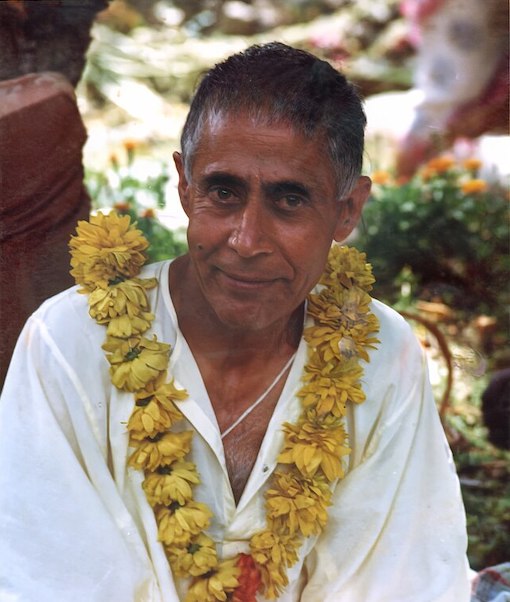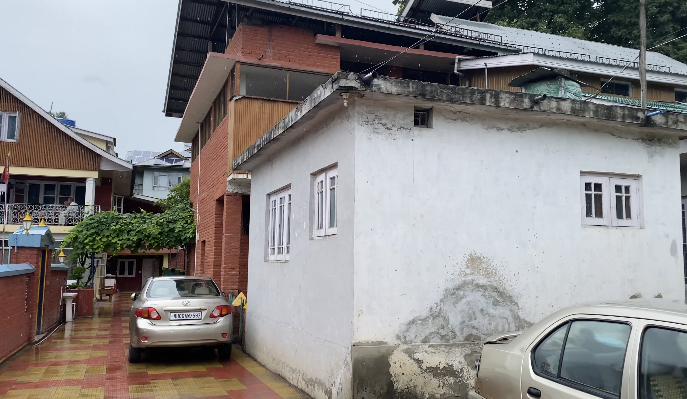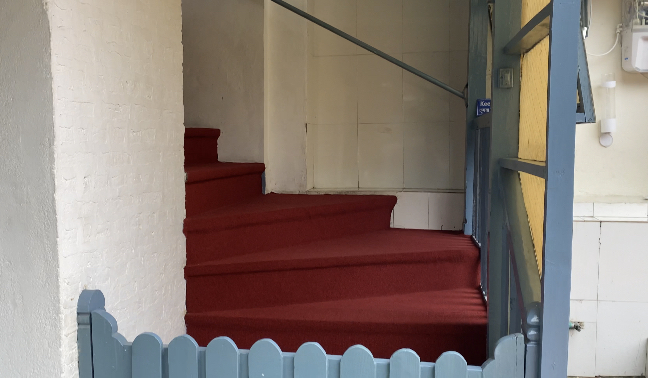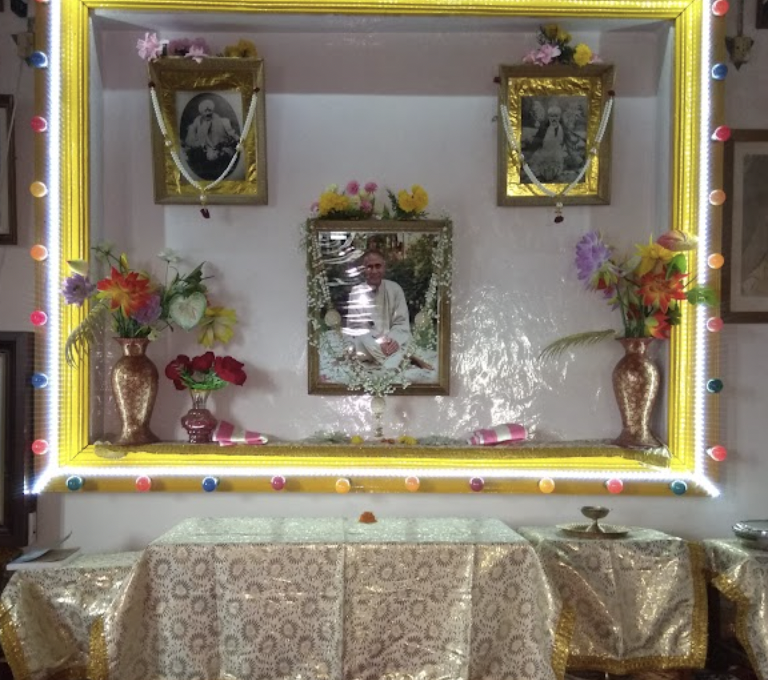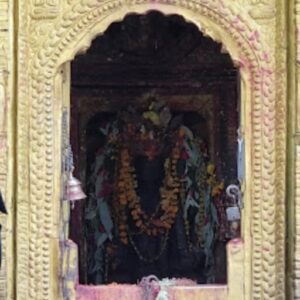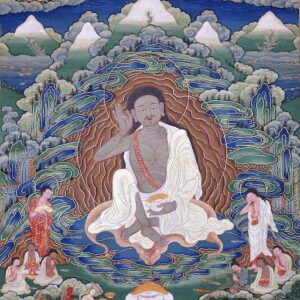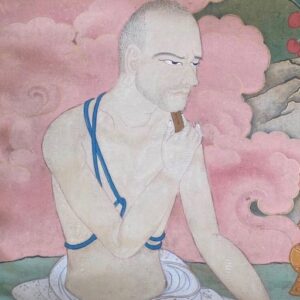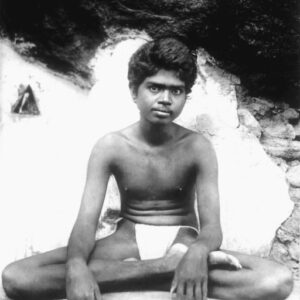This is a satsang hall of Shaivacharya Swami Lakhsman Joo Maharaj.
There is a a place to sit and meditate. You can go into meditative states here effortlessly.
How to Get there
The ashram is located east of Dal Lake, Srinagar.
Map:
https://goo.gl/maps/yPsYXbDXcMKKLn199
About Ishwar Ashram
SwamI Lakshman Joo was born in Srinagar, Kashmir on May 9,1907. He was the last and the greatest of the saints and mastors of the tradition of Kashmir Shalvism. Having a deep understanding of the philosophy & practices of Kashmir Shaivism, ho was like a splendid and shining rare jewel. From early childhood he spent his life studying and practicing the teachings of this unique sacred tradition Because of his intellectual power and strength of awareness, he realized both spiritually and intellectually the reality of its thought. Being born with a photographic memory, learning was always easy for him. In addition to complete knowledge of Kashmir Shaivism, he had a vast knowledge of the traditional religious & philosophical schools & texts of India.
When translating or teaching he would freely draw on other texts to clarify, expand, and substantiate his teaching. He could recall an entire text by simply remembering the first few words of a verse. In time, his reputation as a learned philosopher and spiritual adept spread. Spiritual leaders and scholars Journeyed from all over the world to receive his blessings and to ask him questions about various aspects of Kashmir Shaiva philosophy. He gained renown as a devotee of Lord Shiva and as a master of non-dual tradition of Kashmir Shaivism.
Throughout his life Swamijl taught his disciples and devotees the ways of devotion and awareness. He shunned fame and recognition and did not seek his own glory. He knew Kashmir Shaivism was a most precious jewel and that by God’s grace, those who desired to understand would be attracted to its teachings. His earnest wish was for Kashmir Shaivism to be preserved and made available to all humankind.
In 1990, during his explanation of the sixth chapter of the Bhagavad Gita, Swamiji gave a rare glimpse into the fullness and glory of his own experience:
“I was smoothly going on with my practice and abruptly saktipata came and threw all its force in me. It was super-supreme saktipata. And then it happened and I was newborn. I became so great. I don’t mean to boast but this is what happened. I was newly reborn. And, because I lad to become Bhairava. I had to experience all of the states of yoga. And it happened, everything happened. I had all experiences; and did cidananda also, jagadananda also. Everything happened. You can’t imagine the ways of shaktipata.
On September 27,1991 Swami Lakshman Joo left his physical body and attained the great liberation.
MOVING TO ASHRAM
In 1934, Swamiji moved to a secluded plot of land at the foothill of the Zabarwan mountain range, above Ishber village, Gupta Ganga. A bungalow was constructed by his parents and over the next 18 years Swamiji turned the barren plot adjacent to his house into an Oasis of fruit orchards, mingled with flower and vegetable gardens. Adjacent to this spiritual abode, Sri Jia Lal Sopori of Srinagar built a house for his daughter Sushree Sharika Ji, who, after taking a vow of leading a celibate life, had found her worthy preceptor in Brahmachari Lakshmanjoo.. Later, Sharika Ji’s sister Sushree Prabha Ji , after her husband’s death also joined Sharika Ji in the ashram for learning Shaiva Shastras. Over the next two decades devotees and seekers steadily increased.
Life of Shaivacharya Swami Lakshman Joo Maharaj
BIRTH
Swami Lakshmanjoo, born in Srinagar, Kashmir on May 9, 1907, has been the most recent of the greatest saints and masters of the tradition of Kashmir Shaivism. At his birth his family’s Guru, the great Shaiva master Swami Ram literally danced in joy exclaiming, “I am Rama, let the child be called Lakshmana.”
At birth Lakshmana had five siblings, one elder brother and four sisters. His revered father, Pandit Narain Dass Raina and his mother Arnimal, were noble and God-fearing parents. Pt. Narain Dass was the first person to have introduced Houseboats in Kashmir, which earned him the title “Nav” Narain. He was also the first in Kashmir to wear a coat and ride a bicycle.
CHILDHOOD
Lakshmana, when 3 years old, reveled in making Shiva-lingams out of clay for worship. At five, he would get absorbed in meditation and this raised a concern with his parents, who thought that their son had developed some unusual behavior which may have be some kind of illness.
Swami Ram simply brushed aside their concerns by saying, “I should be blessed with such a condition.” When Lakshmana turned 15, his parents thought of arranging his matrimony, which was the standard practice in those times and ages. But Lo! And Behold! Lakshmana vehemently opposed the idea saying, ‘I am already married to Almighty God!’
SELF REALIZATION
Lakshmana continued to amaze people around him and had the experience of Self-realization for the first time, at the youthful age of 20. His spiritual urge was just increasing by the day and one day it ignited the desire to leave home for practicing yoga at the famous ashram of Sadhamalyun in Handwara (Sadhu Ganga), Kashmir. He left a note for his brothers asking them to look after his parents and another for his father stating that he was leaving in search of almighty.
It was at Sadhamalyun that he had many divine experiences of masters and saints of the past. Upon Lakshmana’s request(and as a precondition for his return), his father built a small house in the factory premises, where he could practice his meditation undisturbed. For seven years (1926-1933) he one-pointedly devoted himself to the study of Sanskrit grammar, Indian philosophy and Kashmir Shaiva literature, under the tutelage of Pandit Maheshwar Nath Razdan. He authored his first book, the bhagwadgita, in 1931.
